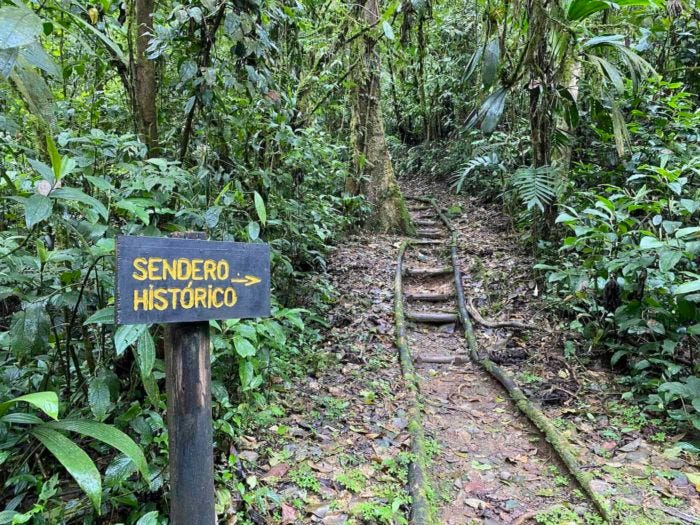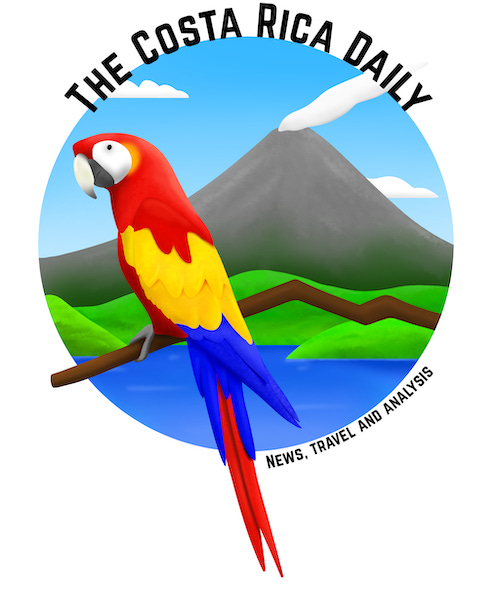Costa Rica's most underrated destination
Turrialba, Cartago has a little bit of everything.
As part of my work over at The Tico Times, I spent much of my week exploring Turrialba during a trip hosted by the Tourism Board. I was impressed — there’s a lot more to do than I initially expected! Below, a sample itinerary.
Hundreds of thousands of people visit Costa Rica every year to enjoy the country’s natural beauty and wildlife, but only a small fraction of them travel to Turrialba, a canton that is replete with both.
Located due east of San José, Turrialba is just two hours from the airport yet feels like a different world entirely. With its active volcano, majestic landscapes, clean rivers and unique gastronomy, Turrialba offers something memorable for just about anyone.
Here’s what to do with three days in Turrialba, Costa Rica:
Day 1: Volcanoes and history
Morning
Your visit to Turrialba should include a stop at the volcano, which towers nearly 11,000 feet above sea level and the surrounding valley.
Turrialba Volcano recently reopened to the public after it was closed for eight years due to eruptions. The volcano is still active — you’ll see gases billowing out from the crater — but hasn’t had a major event in years.
Reaching the summit of Turrialba Volcano isn’t for the faint of heart. The visit includes a 4 km (2.5 mile) hike of moderate to high difficulty through Finca Monte Calas to the crater. En route, your guide will be on the lookout for wildlife while he explains Costa Rica’s volcanic history.
Turrialba Volcano is also a great place to spot the Resplendent Quetzal, one of Central America’s most beautiful and mystical birds.
Book your visit to Turrialba Volcano National Park through the U-SURE Guides Association. The required guide is 6,000 colones (about $10), and entry to the park is 1,000 colones for citizens/residents or $12 for foreigners. Reservations are required. More information here.
Afternoon
After learning of Costa Rica’s geological history, explore its indigenous past at Guayabo National Monument.
The 233 hectares contained within Guayabo house the remains of an indigenous city that was occupied from 1000 BC until about 1400 AD. The 90-minute tour, also offered by U-SURE, takes visitors past tombs, petroglyphs, an excavated road and an aqueduct.
Guayabo National Monument is seldom-touristed. Guides say that Costa Ricans sometimes learn of its existence only when they’re visiting ruins in Mexico or Machu Picchu. Yet it’s an incredibly important site that has been recognized by the American Society of Civil Engineers for its noteworthy architecture.
The pre-montane forest at Guayabo is also a chance to spot toucans and sloths, among other wildlife.
Tickets cost 1,000 colones for citizens/residents and $5 for tourists. More information via U-SURE.
After a busy day of exploring, spend the evening relaxing at Casa Turire, a boutique hotel bordering Angostura Lagoon. Enjoy an outdoor dinner or relax at the pool or spa before falling asleep to the sounds of nature. Foodies can also take tropical cooking classes and learn Tico recipes with the chef.
Day 2: Adventure, adventure, adventure
Morning
After a traditional breakfast at the hotel, select your preferred Turrialba adventure. (Can’t pick just one? Add an extra day to your trip!)
Visit the Río Pejivalle (sometimes spelled Pejibaye) for a day of tubing. Lay back on the inner tube and enjoy a relaxing — and sometimes slightly thrilling — journey down the tree-lined river. More info at TurrialTours.
Adrenaline junkies will enjoy a more action-packed experience rafting in the Pacuare River, which has Class III-IV whitewater rapids lined by lush gorges. The Pacuare has been recognized across the world for its beauty.
If a day in the river doesn’t pique your interest, do a little bit of everything. At Explornatura, you’ll spend an action-packed day canyoning: rappelling down four waterfalls, crossing a hanging bridge and flying through the forest on ziplines. More info at Explornatura, which can also help arrange other tours in the area.
Evening
End the day at the Tropical Agricultural Research and Higher Education Center (CATIE) or at La Marta Wildlife Refuge.
CATIE does important research on agriculture and conservation; they have 30 km of gravel roads suitable for biking. (Rentals are available.) After dark, join a night tour in search of frogs, snakes and other wildlife. More information.
La Marta has 17 km of trails (and 20 different swimming holes) through secondary forest. Hire a guide for the most immersive nature-watching experience, or sign up for a night tour where you’ll learn of the spirits that haunt the reserve. Spend the night camping or at the rustic shelter for a truly wild experience. More information.
Day 3: Food and culture
Morning
Turrialba is known for its coffee and cheese.
Learn about everyone’s favorite caffeinated beverage at Aquiares, Costa Rica’s largest single-unit coffee farm. Visitors can choose a traditional two-hour tour or opt for half- or full-day experiences that can include horseback riding, waterfalls, and visits to the community. More information here.
Or visit Finca La Florita to live the process behind the famous Turrialba cheese. You’ll learn the century-old recipe and experience a taste of rural Costa Rican life — and of course, of the cheese itself.
For a less-involved gastronomical experience, enjoy lunch (or dinner) at Restaurante y Parrillada Betico Mata. Here, you won’t pick your own coffee berries or milk any cows, but you will be served some of the best grilled meat in the area.
Afternoon
As your visit to Turrialba nears its end, make a trip downtown to the Mercado de Arte y Artesanías, held Sunday through Wednesday at Avenida Palmeras. (On other days, that location houses the visit-worthy farmer’s market.)
The craft market is comprised of Turrialba-based artisans who hand-make everything from pastries, to leather belts, to miniature painted oxcarts. Launched in January, the mercado is seldom-visited by foreigners, meaning prices are very reasonable.
Summary: A trip to Turrialba
As you leave Turrialba, you’ll have a better understanding of the geological and cultural histories that helped shape modern-day Costa Rica. You’ll have experienced outdoor adventures, rural traditions and immersed yourself in nature.
In the process, maybe you’ll decide 72 hours in Turrialba isn’t nearly enough.
Support The Costa Rica Daily
Ziplining, tubing, rappelling and birdwatching were a lot of hard work! In all honesty, though, Turrialba was a ton of fun, and we can’t wait to go back.










Hola Alejandro, gracias por su reportaje, me gustó bastante, muy interesante... Todo nuestro país es hermoso. Y le faltó mucho más. Como ver la Orquídea Turrialba (Cattleya dowiana) conocida como la reina de las orquídeas es endémica del Caribe, descrita en 1866 la flor es muy bella por su tonalidades, textura y olor; cataratas, reservas biológicas, zona indígena con su flora y fauna como quetzales y otras aves, las Botas Turrialba, Escuela Genaro Bonilla de más de 100 años, Hacienda Tayutic, el Parapente en Santa Cruz, etc.